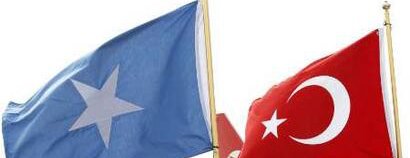 As Toronto police try to find and prosecute those responsible for shootings that left six young men of Somali descent dead in just four months, there could be lessons learned from Minneapolis police, whose recruitment strategies are helping bring down crime in that city’s Somali enclave.
As Toronto police try to find and prosecute those responsible for shootings that left six young men of Somali descent dead in just four months, there could be lessons learned from Minneapolis police, whose recruitment strategies are helping bring down crime in that city’s Somali enclave.All six men in Toronto were fatally shot since June, and only one arrest has been made — that of Christopher Husbands, who has been charged with murder in the death of Ahmed Hassan at the Eaton Centre on June 2.
Police and relatives of the other victims have made numerous pleas for information in those deaths, but there have been no breakthroughs.
Abdulle Elmi, whose cousin of the same name was shot and killed on July 5, wants answers.
“We want the community to come forward,” said Elmi, said, speaking of the approximately 18,500 people in the Toronto area of Somali origin.
Watch Video
“It’s not a matter of the community not assisting the police, it’s more the community and the police not developing an understanding, cohesion or any form of trust to have a very constructive conversation about how to deal with these situations.”
Until about five years ago, Minneapolis was struggling with a similar problem among its large Somali-American community, a significant portion of which is concentrated in the Cedar-Riverside neighbourhood — also known as “The Motherland” — in the south of the city.
In mid-2006, the police force deployed Mohamed Abdullahi, an officer who came to the United States as a refugee in the 90s from Somalia, in south Minneapolis, including the Cedar-Riverside neighbourhood. He was joined in 2008 by another officer of Somali descent, Abdiwahab Ali.
Since 2007, several key crime statistics, including robberies, thefts, burglaries and aggravated assaults, dropped in the area. There were no homicides in the area in the past two years, although a triple homicide occurred in nearby Seward in 2010. And Minneapolis police are attributing the drop in crime in part to the efforts of the two officers.
“People thought: ‘Well, you have this large Somali population, and you really don’t understand them, and you know, they’ve got different cultural ethnicities or centrics that you really don’t understand. How could I as a Caucasian?’” said Richard Stanek, the sheriff of Hennepin County, where Minneapolis is located.
“What we’ve told them is it doesn’t matter which culture it is. Once you have that robust community outreach and you build those trusted partnerships and relationships, we fall back on our community-oriented policing philosophy and strategy in order to build those relationships with the community itself.”
‘It’s all about respect’
The team assigned to Cedar-Riverside, known to locals as officers Mo and Ali, walk the beat and patrol the neighbourhood in their cruisers. CBC News came along with the officers during their patrols in September, and the two displayed an intimate knowledge of the neighbourhood and a familiarity with its residents.
“You kind of humanize yourself. Later on they don’t see you as wearing blue, it’s like ‘Hey, what’s up guy?’ They’re more open to telling you stuff, because they’re more comfortable,” said Abdullahi, who lived in the area before joining the police department.
On one drive through the neighbourhood, Ali noticed what he believed was a new car parked on the street, which he identified as belonging to a suspected gang member who was arrested but never convicted on a murder charge.
A few minutes later, the officers come across the alleged gang member playing basketball. Speaking in Somali, the officers urge the men to stick to basketball for the day, which they said they would do.
“See how we’re having a regular conversation with him? That’s weird, yeah? But it’s all about respect. Nothing personal,” said Abdullahi.
And on another patrol of the neighbourhood, the officers are approached by a man who says he is willing to identify a gunman who fired shots in the area two nights earlier.
Speaking in Somali, he says he didn’t call 911 at the time, but he’s happy to give details to the two officers.
Increased enforcement not always the answer
One neighbourhood resident praised the two officers for turning around the area.
“They are good people. I think they are the neighbourhood’s saviours. They help out the neighbourhood a lot,” said Abdishakur Ahmed, who came to Minneapolis from Somalia 18 years ago and has family in Toronto.
“Before they came here, there was a lack of communication between the [Minneapolis police department] here and the young folks. Now we’ve come to an understanding and we can see the neighbourhood is really safe and is a good environment to walk around in.”
Police in Toronto also have a strategy to target troubled neighbourhoods. The Toronto Anti-Violence Intervention Strategy has teams of specially trained officers engage with high-crime neighbourhoods by day and conduct patrols and step up enforcement at night.
But Toronto police said they don’t keep track of the ethnic origin of their recruits, although police noted they do have a dedicated language line that callers who don’t speak English are directed to.
Flooding a neighbourhood with police, however, is not a tactic the Minneapolis police employ, although Stanek, the sheriff, says it helps to a degree when there has been a spate of crimes in the area.
“That is not the way to police a community or a particular ethnicity. And the reason is is because it’s very suppressive,” said Stanek.




